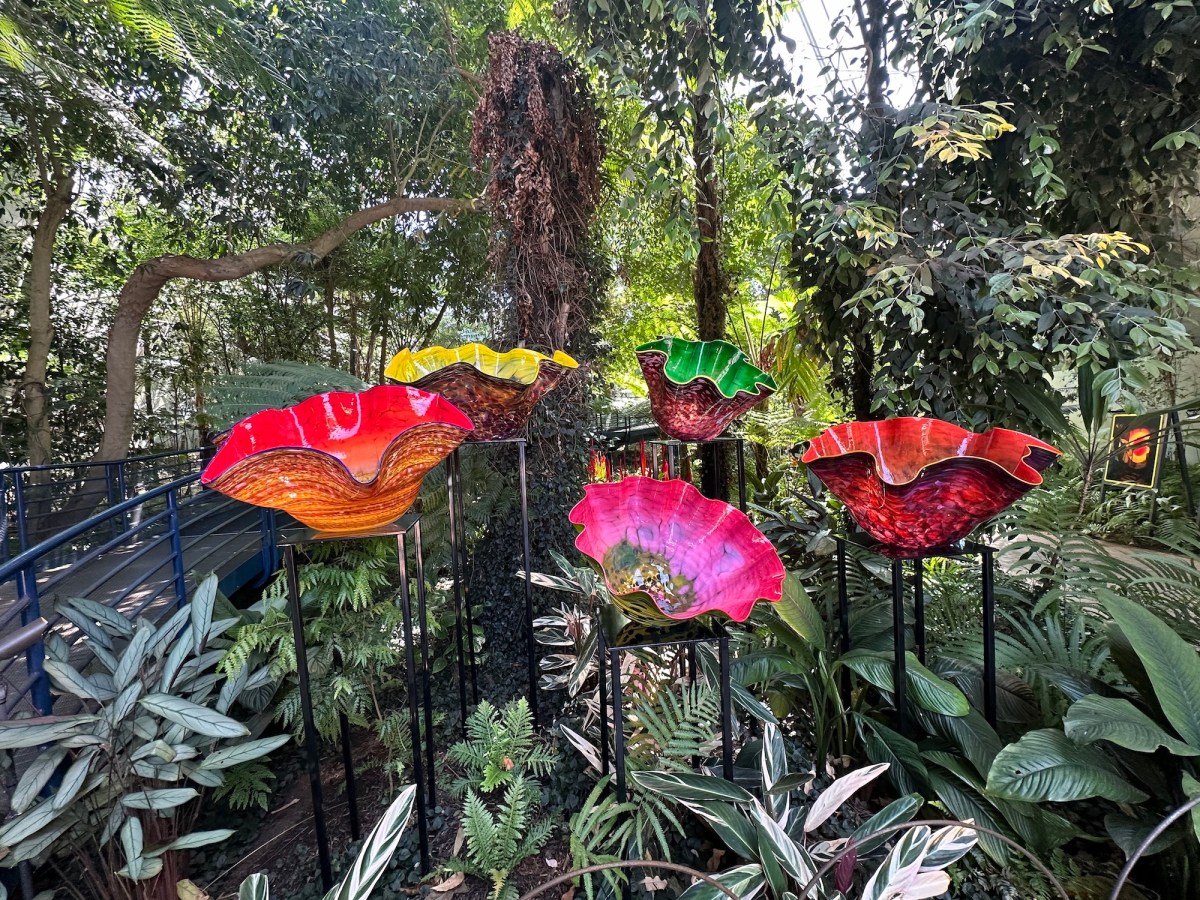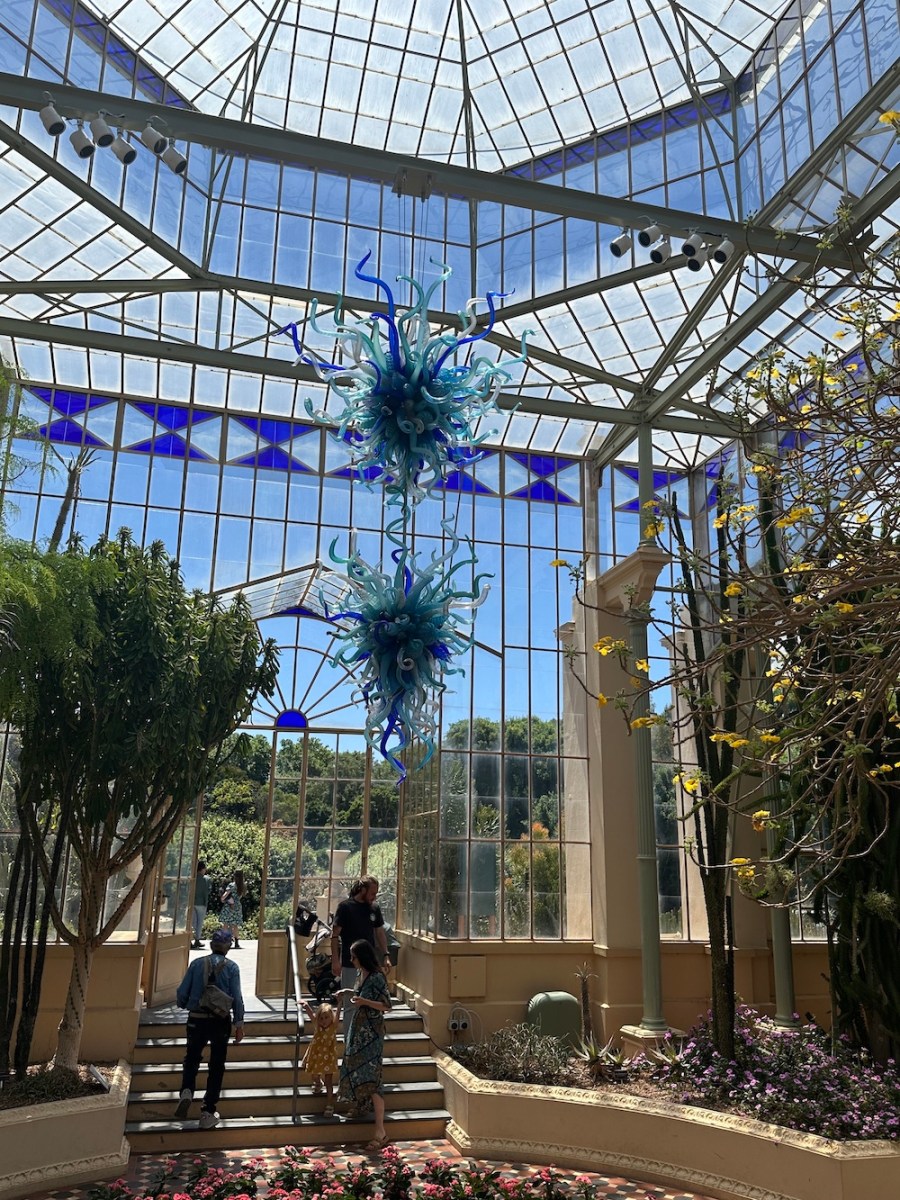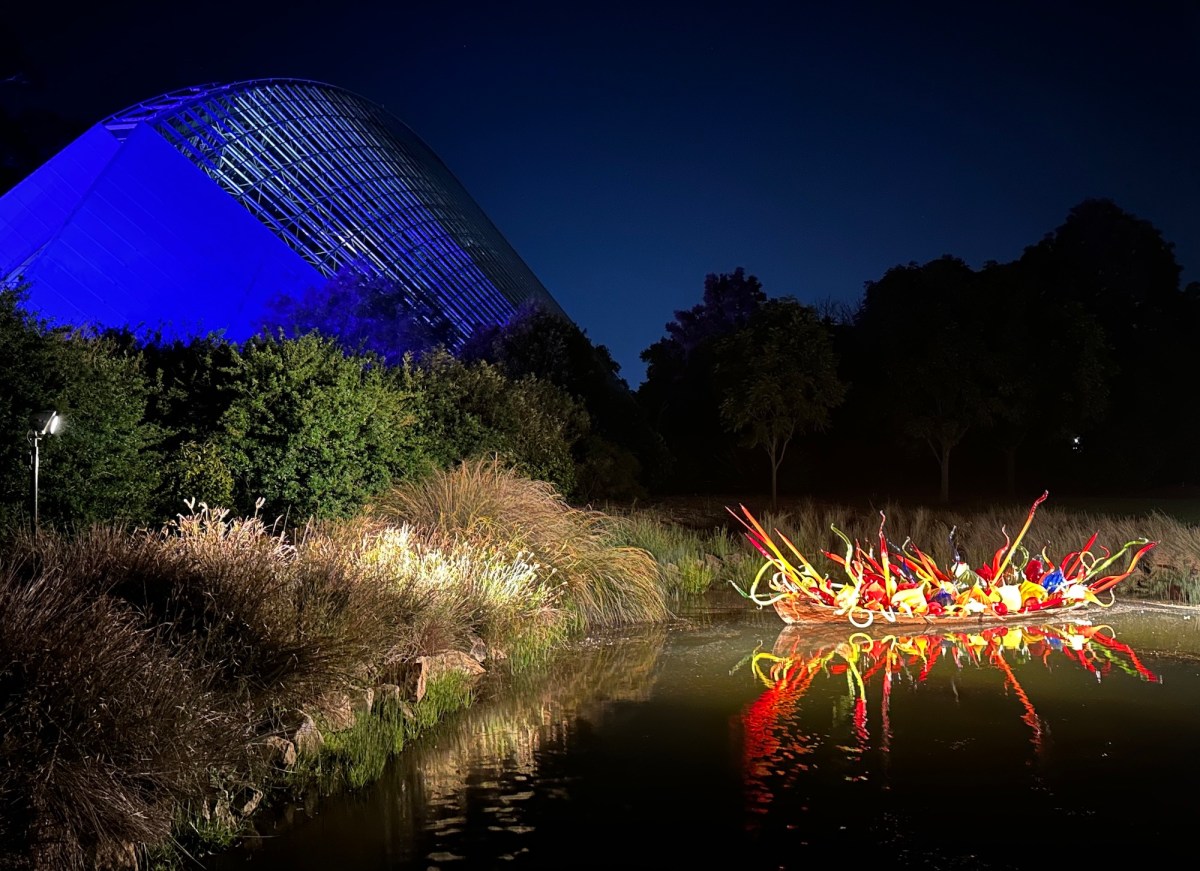US glass artist Dale Chihuly has been presenting exhibitions in gardens since around 2001, largely in the US. Becoming known as his Garden Cycle exhibitions, they perhaps most famously journeyed to London’s Kew Gardens (2005 and 2021), and during COVID to Singapore’s Garden by the Bay (2021).
In a first, they have now made their way to the southern hemisphere, to Australia’s internationally recognised glass city – Adelaide.
Chihuly is no stranger to Adelaide, indeed both the artist and JamFactory co-founder Sam Herman once studied under Harvey Littleton, a giant in the studio glass movement. And within years of Chihuly opening the famed Pilchuk Glass School (just outside of Seattle, US) – to which many Australian glass artists have made the pilgrimage – the JamFactory opened in Adelaide.
One artist who made that journey was Tom Moore, who – in an unusual move for Chihuly to include another glass artist – is running the children’s program for Chihuly in the Botanic Garden.
So what of this multimillion-dollar collection of works, and is it worth the trip to Adelaide? Simply, yes. The exhibition is really three offerings: Chihuly in the Botanic Garden – a free exhibition of 15 large-scale installations that respond to the garden (and vice versa), which visitors can meander through at their leisure.
Then there is In Full Colour: Dale Chihuly, a curated, ticketed exhibition in the 1989 Bicentennial Conservatory (Bi Con), which offers a didactic journey through Chihuly’s career and is paired with nine pieces, largely from his Fiori or flower series. It is the first time that a didactic exhibition has been presented in his garden exhibitions.

The final element is Chihuly Nights, again ticketed, which offers an awe-inspiring 2.5-kilometre circuit illuminated with festoon lights, and programmed with music, talks and dining.
The shift from day to night is a staggeringly different experience, and it is a smart way to extend the ticket life of the show over its seven-month run, and stimulate the night-time economy.
The visitor numbers are extremely good. But so is the work. Glass is stunning in a garden setting, and Adelaide’s climate is perfect to present it.
We have to remember that Chihuly really got into gardens through his love of glass houses, and then moved from there out into the landscape. What exhibitions like these do is reframe glass in people’s minds – as a medium it is not that fragile that we can’t take it outside, and at scale!
One of the first pieces to be installed was Cattails and Copper Birch Reeds (2024) in the Economic Garden. It is a great example of how the horticultural curators worked with the Chihuly team to pair up the plants for the exhibition – here a flurry of kangaroo paw mimicking Chihuly’s dancing licks of red glass.
The experience has been designed so viewers can take advantage of the Garden’s vistas, weaving through wisteria arbours then popping into open greens, framed within secret gardens or playing off the architecture. It is very thoughtful and, even if only subliminally absorbed, it is a constantly changing offering, as the Garden’s foliage and blooms shift colours over the course of the installation’s long run.
Some great examples are the Chartreuse Hornet Polyvitro Chandelier (2001), which sits at the end of the Mediterranean Garden, and The Sun (2014) in front of the Museum of Economic Botany, superbly playing off the architecture.
Of note, two new pieces have been commissioned for Adelaide – Jet and Crimson Fiori (2024), which responds to South Australia’s state flower, shown in the Bi Con, and Glacier Ice and Lapis Chandelier (2024), a double-tier piece, echoing the two-tier structure of the 1877 Palm House. The scale is perfect for the site, and the hope is that the new site-responsive piece will become permanent.

It makes a stunning connection with the piece Sapphire Star (2010) outside, and the vintage cobalt glass of the Palm House. Each piece of glass has a faceted construction to capture the light.
A personal highlight is the installation Ethereal Spring Persians (2022) in Sunken Garden – it really is a gem to discover.
Read: Exhibition review: Joan Ross, Those trees came back to me in my dreams, National Portrait Gallery
Arguably, Chihuly got his break by being awarded a Fulbright Scholarship to do a residency at the Venini factory in Murano, Venice in the 1960s – he was really the first American to crack the Italian scene – and it’s the repercussions of this we witness at the Botanic Garden in Adelaide.
What I love about this project is you can choose your level of engagement; bring a picnic and laze, or dive deeper into learning more about glass art and Chihuly’s career.
Chihuly last showed in Australia at JamFactory in 2000. Twenty-four years later, his return is stratospheric. This exhibition delivers on the promise of his reputation.
Having presented 16 major installations to date across his career, Adelaide Botanic Garden now sits within that history of international projects. It is an absolute nod of respect to the ambition of the team, and also the capacity of Adelaide to do partnerships well – and in creative ways – to turn this project around in two years, and deliver it with such professionalism and generosity.
Chihuly in the Botanic Garden
Adelaide Botanic Garden
27 September – 29 April 2025
Chihuly in the Botanic Garden is free.
In Full Colour: Dale Chihuly and Chihuly Nights are ticketed.





_Encounters-in-Reflection_Gallery3BPhoto-by-Anpis-Wang-e1745414770771.jpg?w=280)